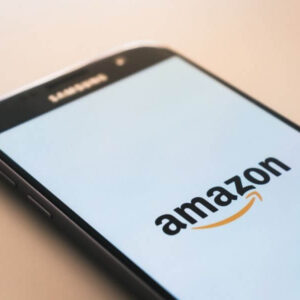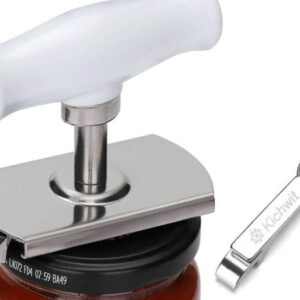What is Amazon Go? The inner working of Amazon Go? Amazon Go is a chain of convenience stores in the United States and the United Kingdom, operated by the online retailer Amazon. The stores are cashierless, thus partially automated, with customers able to purchase products without being checked out by a cashier or using a self-checkout station. As of 2023, there are 43 open and announced store locations in Seattle, Chicago, London and New York City.
Amazon Go stores were conceptualized and tested by a team of Amazon executives, who constructed a 15,000-square-foot mock supermarket in a rented warehouse in Seattle, before revealing the work to Amazon founder Jeff Bezos in 2015. The first store, located in the company’s Day 1 building, opened to employees on December 5, 2016, and to the public on January 22, 2018. The flagship store sells products such as prepared foods, meal kits, limited groceries and liquor. A larger variant, Amazon Go Grocery, opened in Seattle’s Capitol Hill neighborhood on February 25, 2020. The following month Amazon began to offer its technology to other retailers so that their customers could make purchases without the involvement of cashiers or Amazon accounts.
What is Amazon Go?
Amazon Go is a revolutionary retail store concept introduced by Amazon in 2018.
It represents a significant shift in the world of grocery shopping, as Amazon explores new ways to enhance the shopping experience for its customers. While Amazon had already been investing in grocery shopping through services like Amazon Fresh and Prime Now, they took bolder steps with the acquisition of Whole Foods in 2017 and the subsequent introduction of Amazon Go in January 2018.
Amazon Go, located in Seattle, offers an unparalleled and effortless in-store grocery shopping experience. Customers can enter the store by simply scanning the Amazon Go app on their smartphones, eliminating the need for traditional checkout processes. Once inside, they can immediately begin their shopping journey without any delays.
The magic lies in the simplicity of the process.
Shoppers can freely browse the store, select the products they want, and place them directly into their bags. When they’re done shopping, they can simply walk out of the store without having to touch anything or go through a traditional payment process with a cashier or a POS machine.

The success of Amazon’s Go
The profitability of Amazon Go can be seen through the impressive revenue it generates. Analysts have studied the customer traffic at Amazon Go locations and found that, on average, there are approximately 550 customers per day. This translates to an estimated annual revenue of around $1.5 million for each store.
To put this into perspective, traditional convenience stores of similar size typically generate just over $1 million in revenue according to data from the National Association of Convenience Stores. This indicates that Amazon Go’s revenue outperforms that of regular convenience stores.
These figures highlight the strong profitability of Amazon Go’s innovative approach to retail. By eliminating the need for traditional checkout processes and embracing advanced technology, Amazon Go stores have created a shopping experience that attracts a substantial number of customers and drives significant revenue. The success of Amazon Go demonstrates the potential for checkout-free models to thrive in the retail industry.
The inner working of Amazon Go
Amazon Go offers a unique and futuristic shopping experience that starts with customers downloading the Amazon Go app and creating an account.
Once these initial steps are completed, they can effortlessly enter the store by scanning their smartphones at the entrance.
Inside the store, an array of cutting-edge technology known as ‘just walk-out takes center stage. This includes an intricate network of sensors and cameras strategically placed throughout the store. These advanced systems work in harmony to track the items that customers pick up from the shelves, as well as any items they decide to put back.
When customers have completed their shopping, they can simply walk out of the store without the need for traditional checkout lines or scanning items. The magic happens behind the scenes as the store’s sophisticated technology automatically tallies up the selected items and charges the customer’s Amazon account accordingly. Shortly after leaving the store, customers receive their detailed receipts via email for easy reference.
This innovative checkout-free solution has the potential to redefine the shopping experience, providing unparalleled convenience and efficiency.
To help you understand Amazon Go better, we dissected the operational process in the following sections.

How does Amazon Go know who you are?
When it comes to self-serve stores, like Amazon Go, keeping track of who you are and who should be charged for the items you take requires a clever combination of technologies. And your trusty smartphone plays a vital role in this process.
To get started,
- You simply open your Amazon app
- Log in to your account
- Scan a QR code at the store’s entrance.
This action establishes your identity and links it to your shopping experience. But that’s not all—the store’s cameras might snap a picture of your face at this point.
Don’t worry, though, it’s not for a gallery display!
The facial recognition technology and nifty figure-tracking software work together to track your movements as you navigate through the store.
But there’s another intriguing aspect to consider.
Some department stores are already using the Device ID (DID) of your smartphone to enhance your shopping experience. This fascinating technology could also play a role in future self-service shopping adventures.
So, your smartphone, QR codes, facial recognition, and even the DID of your device are the behind-the-scenes superheroes that make self-serve stores tick. They work together to ensure that you’re recognized, your purchases are accurately recorded, and you can enjoy a seamless and convenient shopping experience.
How does Amazon Go know what you took?
Have you ever wondered how self-serve stores magically know what items you’ve taken?
Well, they employ a fascinating array of techniques, and the possibilities seem endless. While the exact workings of Amazon Go stores remain a bit mysterious, an Amazon patent suggests they likely utilize a combination of weight-sensing shelves and shelf cameras to track the number of items on each shelf.
These stores are equipped with clever systems that track people and their movements. By combining this information with the data from the weight-sensing shelves and shelf cameras, it becomes a breeze to match a person who entered the store.
Amazon Go introduces a delightful shopping companion known as the “Dash Cart.” These clever devices are designed to enhance your shopping experience with their compact size and integrated scale functionality. As you peruse the aisles and add items to your cart, the Dash Cart diligently weighs each product, ensuring accurate tracking of your selections. This smart innovation enables seamless monitoring of the items you place in your cart and those you decide to remove, making your shopping journey even more effortless and enjoyable.
Now, let’s explore some other captivating methods and technologies that have emerged to enhance the shopping experience.
Some stores offer self-scanning options where you can scan the items yourself as you shop. And for a touch of nostalgia, there are even checkout kiosks available. Additionally, these stores have RFID tags, which use short-range radio waves to precisely track the location of valuable items.

Above is information about What is Amazon Go? The inner working of Amazon Go? that we have compiled. Hopefully, through the above content, you have a more detailed understanding of Amazon Go. Thank you for reading our post.








